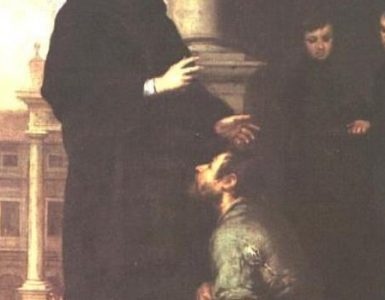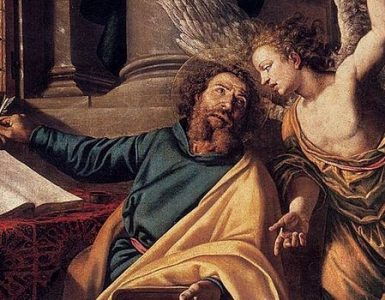Editor’s Note: This is part one of a two-part reflection.
As I was reflecting on Genesis 1:26-31 in the Holy Land recently, I thought of the nature of man, a stable datum that is being challenged today. Nature sets limits, as does God the Father. When He creates, He separates.
God’s first creative act was to erect boundaries, limits. God separates light from darkness, the waters above from those below. He also put limits that separate the waters from the land, the day from the night, the Sabbath from workdays, human beings from animals, and men from women. God blessed all of them and declared them “good.”
Being and the moral act come together from the start. God is being, and His goodness flows from Him for all eternity, i.e. the so-called bonum diffusivum sui. God is Father, and like any father, He is generous but puts limits.
The limits He sets are what hold back the mythical sea monsters of “chaos.” These monsters are always ready to uproot God’s creation and to return it to its original state of “formless, desolate emptiness.” Man’s nature is one such limit. Man is not a woman, and woman is not a man. Man is not transhuman. Man is man, and the Lord Jesus Christ came not only to show us the Triune God but, in showing us God’s nature, He showed us our relational nature. We are made of relationships. We are not made to be alone. We are not made to remain separate. Instead, we are made to communicate with one another while maintaining our distinct individuality. It has to do with distinction rather than separation.
This concept was very clear to me in the Holy Land. I perceived intense religious sense in Jerusalem. However, I also perceived very much separation between the three monotheistic religions. I understand why. I understand that we are not the same. A Christian who believes that Jesus Christ is the Eternal Temple cannot cry over the destruction of Solomon’s Temple, after all. Yes, he can do so out of respect, as a gesture of politesse, but not as a religious gesture per se.
The same applies for the respect given to the Mosque of Omar Caliph, site of the Rock that is deemed to be the center of the world. It is significant for a Muslim but not for a Christian or a Jew. After all, it symbolizes Omar Caliph’s taking of the Holy Land in 638.
This applies to the Holy Sepulchre as well. Most of the Jews in Jerusalem have never been there, even though I did see Muslims there. The fact that I saw Muslims there or that I felt less of a contradiction with the Mosque shows how much closer the Jews and the Christians are to one another. The Jews share a common root with us, after all. One can get this sense with the Orthodox Christians or with Protestant Christians even more so.
The more similar one is, the more tension there can be. Such is the reason why St. Thomas Aquinas writes that it is more sinful to be a heretic than to be a Jew or a non-believer (cf. ST II-II q. 10). The closer one is to the “perfection” of the revealed Word, the more sinful his action of betrayal is. Such is the case with Judas Iscariot, for instance. With much given, much is expected. Such is the nature of love and responsibility. A response of love to love is expected.
Notwithstanding the tensions I sensed, I understood that the Christians present in the Holy Land are peace-bearers. The Lord unites God to Man precisely through the Incarnation, a great gesture that reveals that God is Love. The message of Christ is precisely a message of unity, however, a unity that respects the distinct individuality of each person, of each group.
This relationship lies at the very foundation of any marriage that flourishes, for instance. The Lord must stand between the two spouses. He must be the object of union between the two persons, confirming them in one flesh, una caro. The relationship between a man and a woman in marriage is unique, as is the relationship between a woman and a man.
Notice that I mentioned two relationships. Obviously, the uniqueness of marriage relationships remains precisely in the procreative relationship, “Be fruitful and multiply, fill the earth; subdue it and have dominion over the fish of the sea and over the birds of the air and over every living thing…” (Gen. 1:28) There is a harmony that takes into account the hierarchy of being, as explained by St. Thomas Aquinas in De Veritate q. 20 and John Paul II in his work Love and Responsibility, written before he became Pope.
Every relationship is unique. Every relationship is precious. When one understands this uniqueness of each relationship, he or she is able to be open to many different and individual relationships with many people and not be envious of what they share with others because what each person shares with another cannot be repeated.
Tomorrow, in Part 2, I will identify how our distinct individuality and call to relationship is further developed in the person of Jesus Christ, the Mediator.
Photo by Erke Rysdauletov on Unsplash










